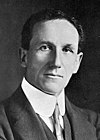1920 New South Wales state election
State election for New South Wales, Australia in March 1920 From Wikipedia, the free encyclopedia
The 1920 New South Wales state election was held on 20 March 1920. The 24th parliament of New South Wales was dissolved on 18 February 1920 by the Governor, Sir Walter Edward Davidson, on the advice of the Premier William Holman. The election was for all of the 90 seats in the 25th New South Wales Legislative Assembly, and it was the first to be conducted with multi-member electorates, using the Hare-Clark single transferable vote system.
| |||||||||||||||||||||||||||||||||||||||||||||
All 90 seats in the New South Wales Legislative Assembly 46 Assembly seats were needed for a majority | |||||||||||||||||||||||||||||||||||||||||||||
|---|---|---|---|---|---|---|---|---|---|---|---|---|---|---|---|---|---|---|---|---|---|---|---|---|---|---|---|---|---|---|---|---|---|---|---|---|---|---|---|---|---|---|---|---|---|
| |||||||||||||||||||||||||||||||||||||||||||||
 Results of the election | |||||||||||||||||||||||||||||||||||||||||||||
| |||||||||||||||||||||||||||||||||||||||||||||
It was conducted using 24 districts, 15 having 3 members and nine having five members.
Key dates
| Date | Event |
|---|---|
| 18 February 1920 | The Legislative Assembly was dissolved, and writs were issued by the Governor to proceed with an election. |
| 28 February 1920 | Nominations for candidates for the election closed at noon. |
| 20 March 1920 | Polling day. |
| 12 April 1920 | Storey ministry sworn in |
| 21 April 1920 | Writs returned. |
| 27 April 1920 | Opening of 25th Parliament. |
Results
Summarize
Perspective
The assembly was evenly divided, with Labor having 43 seats and the support of Percy Brookfield (Socialist Labor) and Arthur Gardiner (Independent Labor), while the Nationalists had 28 seats and the support of 15 seats of the Progressive Party and 2 independent Nationalists.[1][2][3] The Speaker of the Legislative Assembly did not vote unless there was a tie which meant whichever side provided the speaker was unable to command a majority. Nationalist Daniel Levy controversially accepted re-election as speaker, giving Labor an effective majority.[4][5]
Compared to previous election held using majority-runoff, two new parties had representation in the chamber - Progressive and Socialist Labor.[6]
|
1920 New South Wales state election [1] | ||||||
|---|---|---|---|---|---|---|
| Enrolled voters | 1,154,437 | |||||
| Votes cast | 648,709 | Turnout | 56.19 | −5.24 | ||
| Informal votes | 62,900 | Informal | 9.70 | +8.68 | ||
| Summary of votes by party | ||||||
| Party | Primary votes | % | Swing | Seats | Change | |
| Labor | 252,371 | 43.08 | +0.45 | 43 | +10 | |
| Nationalist | 175,280 | 29.92 | −17.52 | 28 | −24 | |
| Progressive | 88,557 | 15.12 | +15.12 | 15 | +15 | |
| Independent [a] | 28,410 | 4.85 | −2.55 | 1 | –3 | |
| Democratic | 14,026 | 2.39 | +2.39 | 0 | ||
| Soldiers & Citizens | 10,055 | 1.72 | +1.72 | 0 | ||
| Ind. Nationalist | 9,357 | 1.60 | –0.87 | 2 | +1 | |
| Socialist Labor | 6,143 | 1.05 | +0.99 | 1 | +1 | |
| Women's | 1,610 | 0.27 | +0.27 | 0 | ||
| Total | 585,809 | 90 | ||||

Changing seats
See also
Notes
- Includes Independent Labor.
- Stood as an Ind. Nationalist
- Patrick Minahan was nominated by the Labor Party, however his endorsement was withdrawn before the polling day because he signed a pledge for the unconditional release of twelve imprisoned members of the Industrial Workers of the World.[7]
References
Wikiwand - on
Seamless Wikipedia browsing. On steroids.



